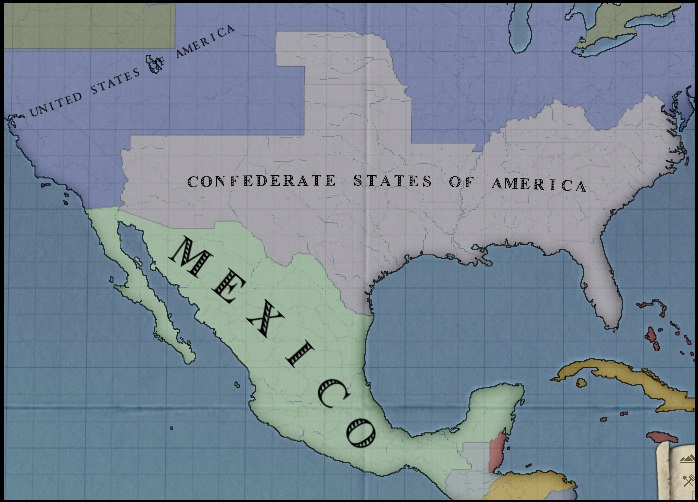A strong success giving a key foothold in South America! I very much concur with O'Donnell in thinking this is the time to push that advantage as much as possible - for who knows when that troublesome factor of international opinion may flip again...
Quite interesting to see a weak Bolivia and an unusually strong Ecuador and Paraguay (looks like Peru never snatched Pastaza from Ecuador). Looks like there could be some tempting targets to take, as long as the Brazilians can be kept on-side.
A shame about the CSA, though a relief that the Union cores have expired. If the Union can no longer plausibly retake the CSA in full then that does mean that propping the Confederates up is a much lower priority though.
Quite interesting to see a weak Bolivia and an unusually strong Ecuador and Paraguay (looks like Peru never snatched Pastaza from Ecuador). Looks like there could be some tempting targets to take, as long as the Brazilians can be kept on-side.
A shame about the CSA, though a relief that the Union cores have expired. If the Union can no longer plausibly retake the CSA in full then that does mean that propping the Confederates up is a much lower priority though.










